Wooden manors with dormer windows and brass weathercocks: Kobe’s Kitano-Cho District will probably go against all your expectations of a Japanese city. Your impression wouldn’t be off, as the quarter is quintessentially European, consisting of the mansions of foreign merchants who came to Japan in the late Meiji Era (1868 to 1912).
Several Ijinkan (foreign houses) can be visited either separately or with a handy combination ticket and due to the different nationalities of their former occupants, exploring Kitano-Cho at times feels like visiting a slightly more real version of EPCOT. Read on for everything you need to know about Kobe’s merchant quarter.
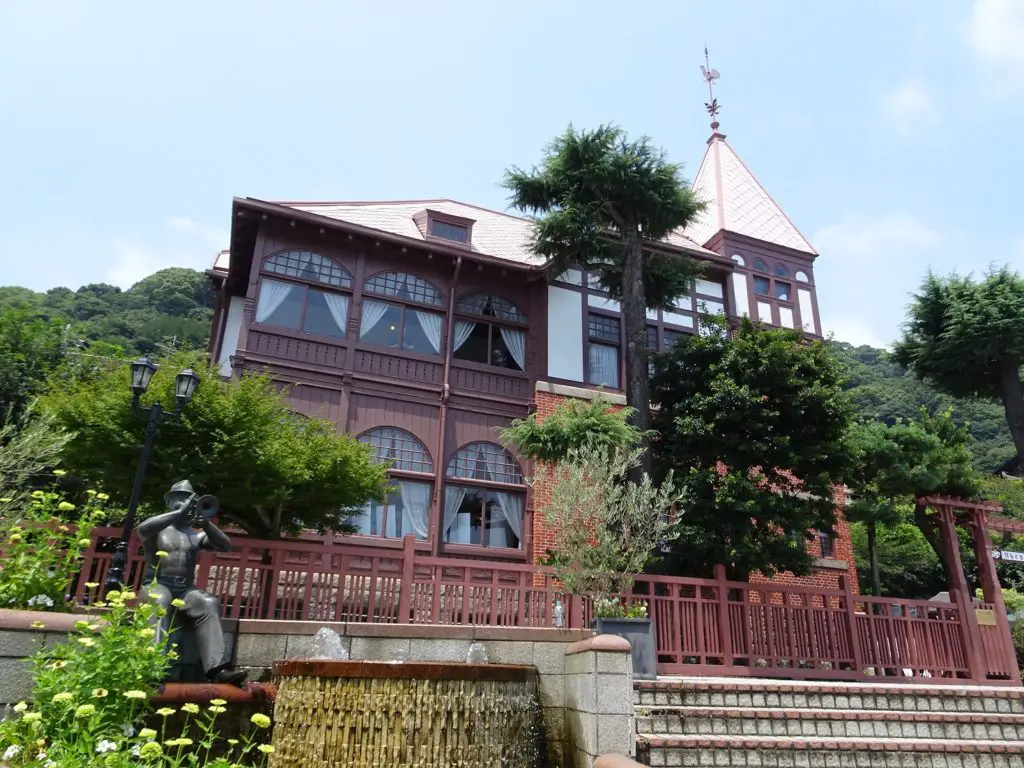
This post may contain affiliate links and I might earn a small commission at no additional cost to you. For more info click here.
Is Kitano-Cho worth visiting?
While walking through the quarter, we noticed that it seems to be a huge hit with Japanese visitors but there weren’t as many Westerners around. This is probably due to the fact that the merchant’s houses are perceived as nothing special when compared to the familiar architecture back home.
We beg to differ and while exploring the quarter we thoroughly enjoyed learning about the life of 19th century merchants in the country. Apart from that, we thought it charming to see how the move to a foreign country didn’t stop the merchants and their families from bringing all the usual bric-a-brac from back home with them to clutter their new homes with.

It’s a fun place to explore as much for the history as for the delighted reactions of the domestic tourists and if you look beyond the layers of kitsch, you’ll get a genuine glimpse into a rare facet of Japanese history.
When to visit Kitano-Cho?
As mentioned, the area is hugely popular with Japanese tourists, so to avoid crowded houses, I suggest going either in the morning or late afternoon. Most mansions are open from 9.30AM to 6PM. Check this site for the opening times of the separate places.
How much is a visit to Kitano-Cho?
Visiting the quarter and seeing the mansions from the outside is completely free. If you want to explore the interior of the houses, you’ll have to pay 550¥ for most of them, except Uroko House, which is a pretty steep 1,050¥.
There are several combination tickets for 3, 4 or 7 houses costing between 1,400¥ and 3,000¥. Note that the houses included are stipulated on the tickets, so unfortunately you can’t pick-and-choose with the cheaper ones. More info can be found here.
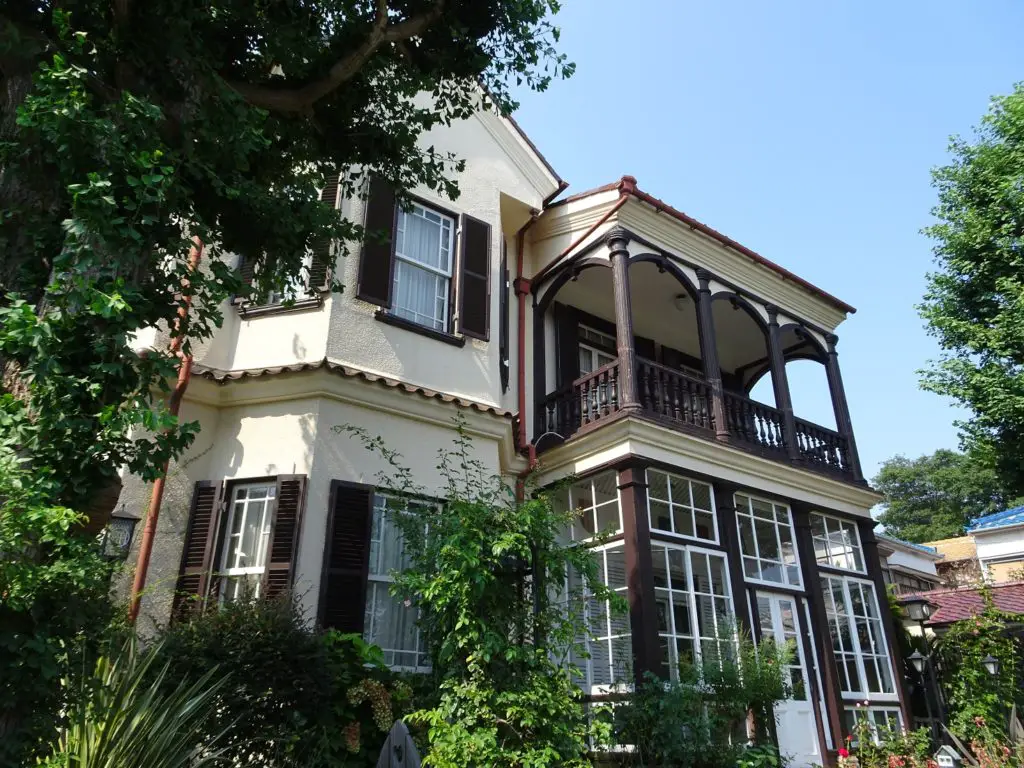
The Weathercock House and Moegi House are not included in any of the tickets and require a separate entrance fee of 400¥ separately or 650¥ together.
Which Kitano-Cho Mansion should you visit?
All of them are at least of some interest but if you only have time or money for one, I suggest checking out the Weathercock House or Moegi House, as they give the best glimpse into the living situation of the merchants. Uroko House is also interesting, but a bit expensive to visit without a combination ticket.
Some of the other houses can feel a bit gimmicky, at times.
Exploring the Ijinkan of Kitano-Cho
To give you an idea what the houses are about, I’ll give a short description of the ones we explored during our visit.
Starbucks Ijinkan
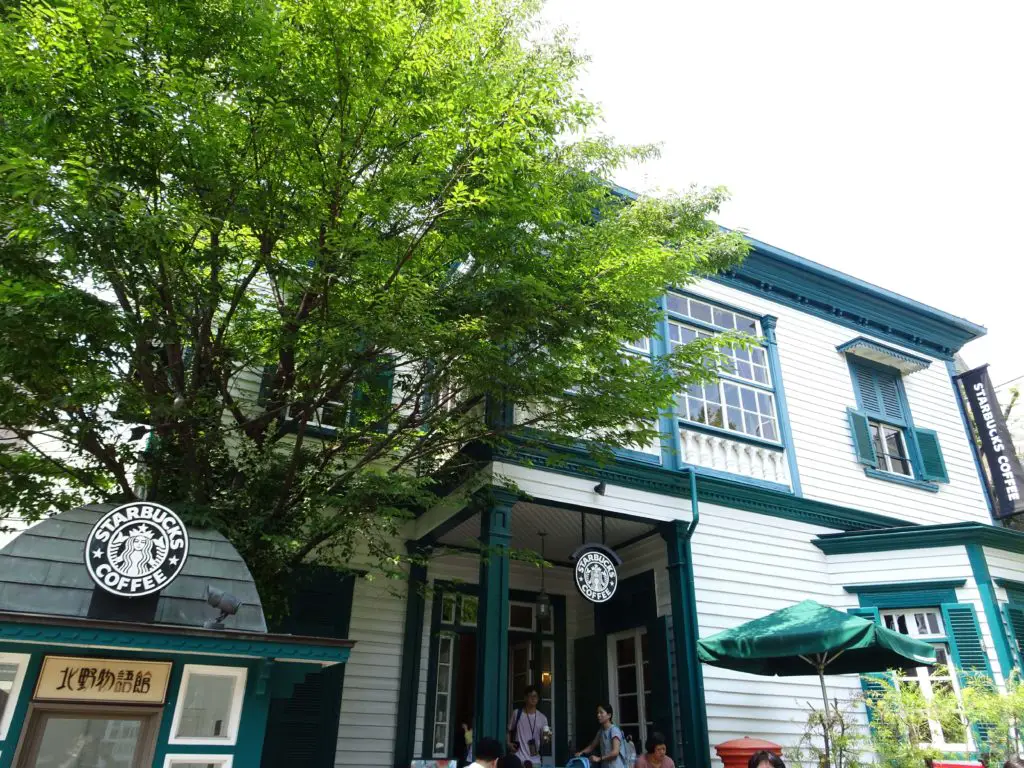
Let’s start with something unusual: At the southern edge of Kitano-cho, a former merchant’s house has been transformed into a branch of everybody’s favourite overpriced coffee chain. You can sip your caffeine-stimulant of choice in front of the old fireplace and spill your Frappuccino over the original floorboards. No entrance fee except for the nerves it costs to squeeze through the ranks of other coffee addicts.
Weathercock House – The German House
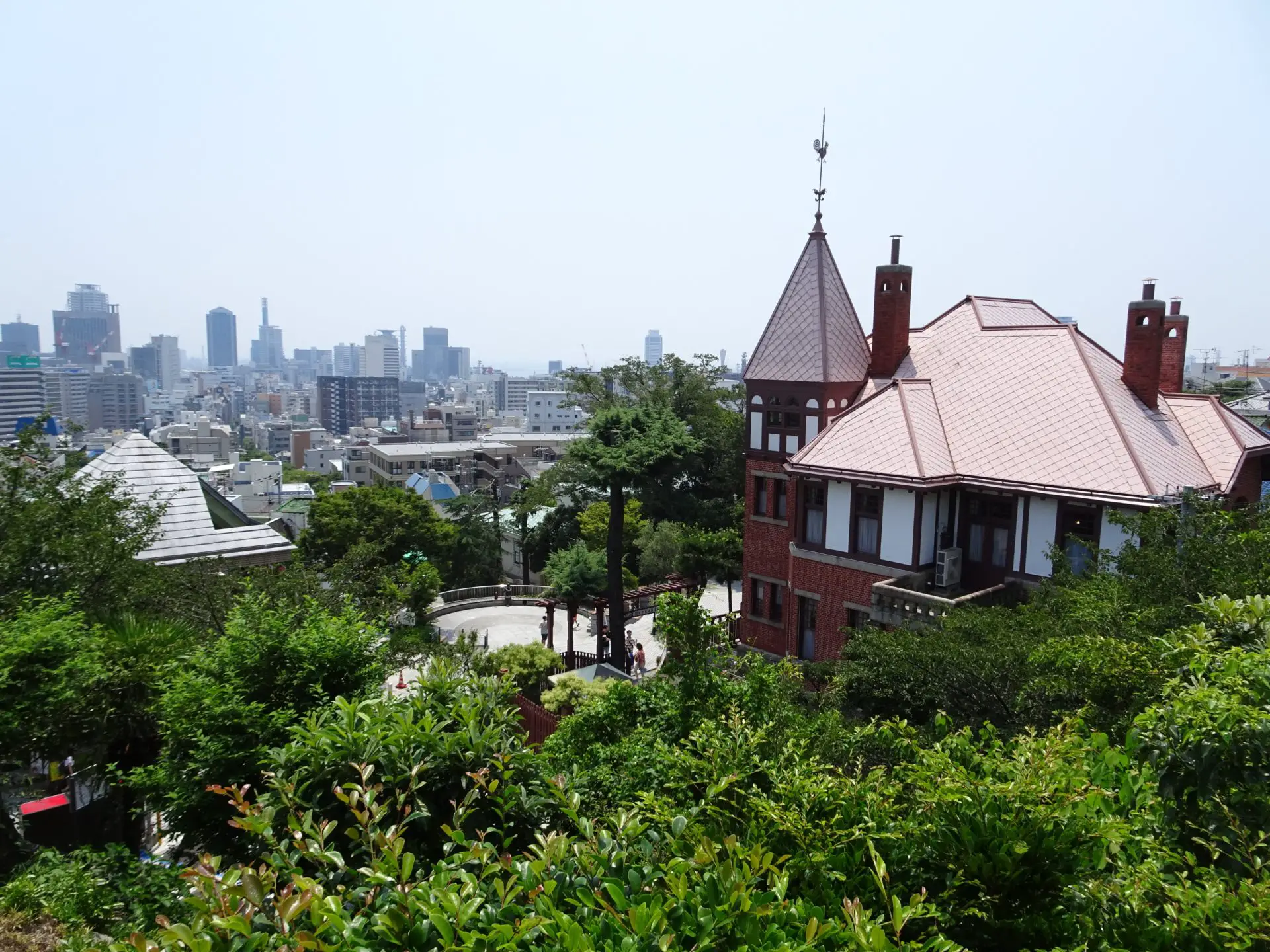
One of the more impressive houses from the outside, this mansion belonged to German merchant Gottfried Thomas and his family. Apart from some pretty gloomy period furniture, expect historic photographs of the family and some pretty icky wallpaper (think lots of roses). Most of the rooms have been recreated like they were in the 19th century, thus giving you an interesting glimpse into the domestic life of the merchant family.
Moegi House – The US-American House
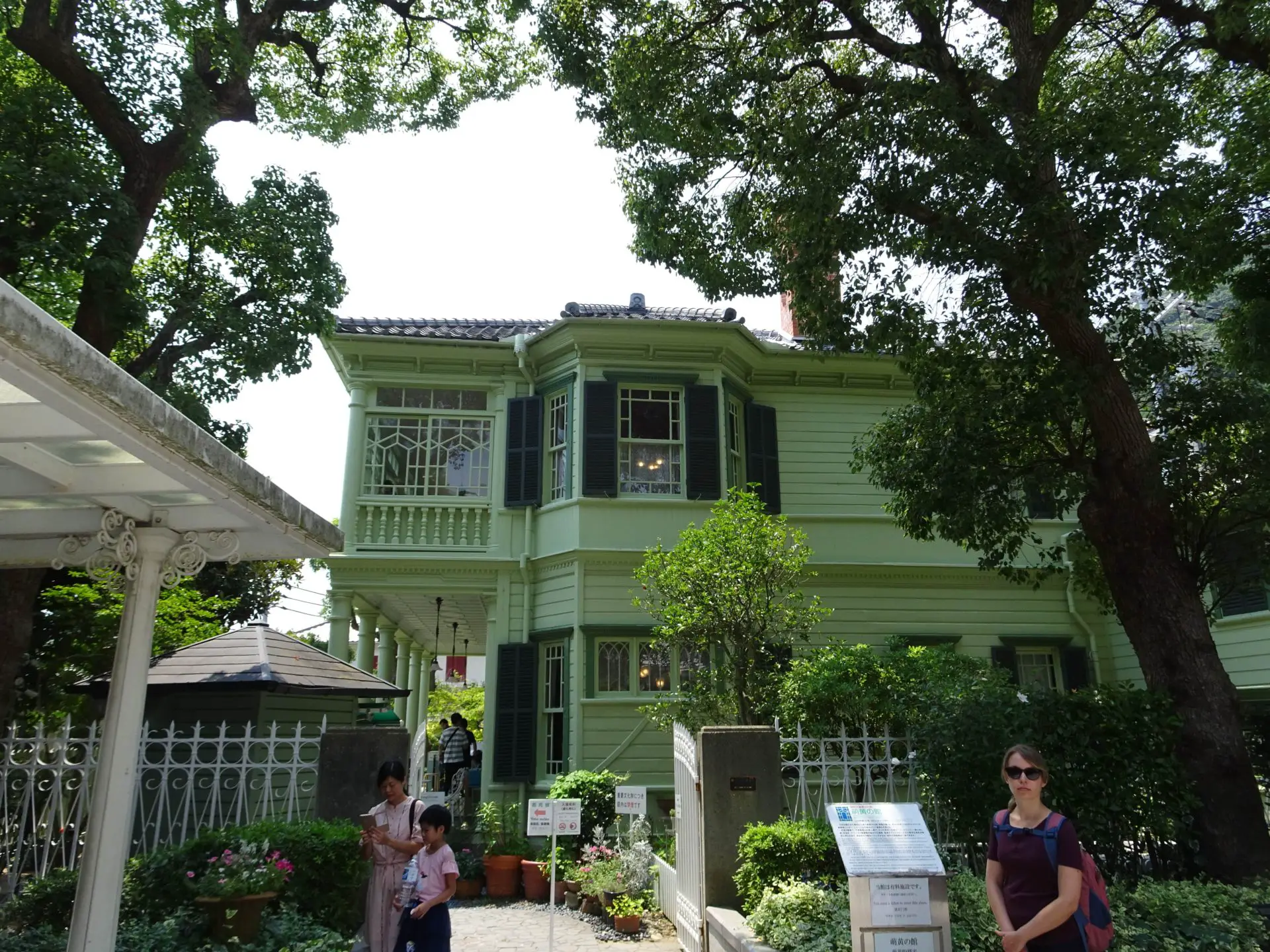
This pretty mint-green building used to be the home of the Consul-General of the United States. It’s set in a cute garden and features an impressive portico and some pretty bay windows. Again, the interior recreates the house as it was when occupied, while the second-floor verandah offers nice views over central Kobe and down to the Ocean.
Yamate 8-Bankan – The Hillside House
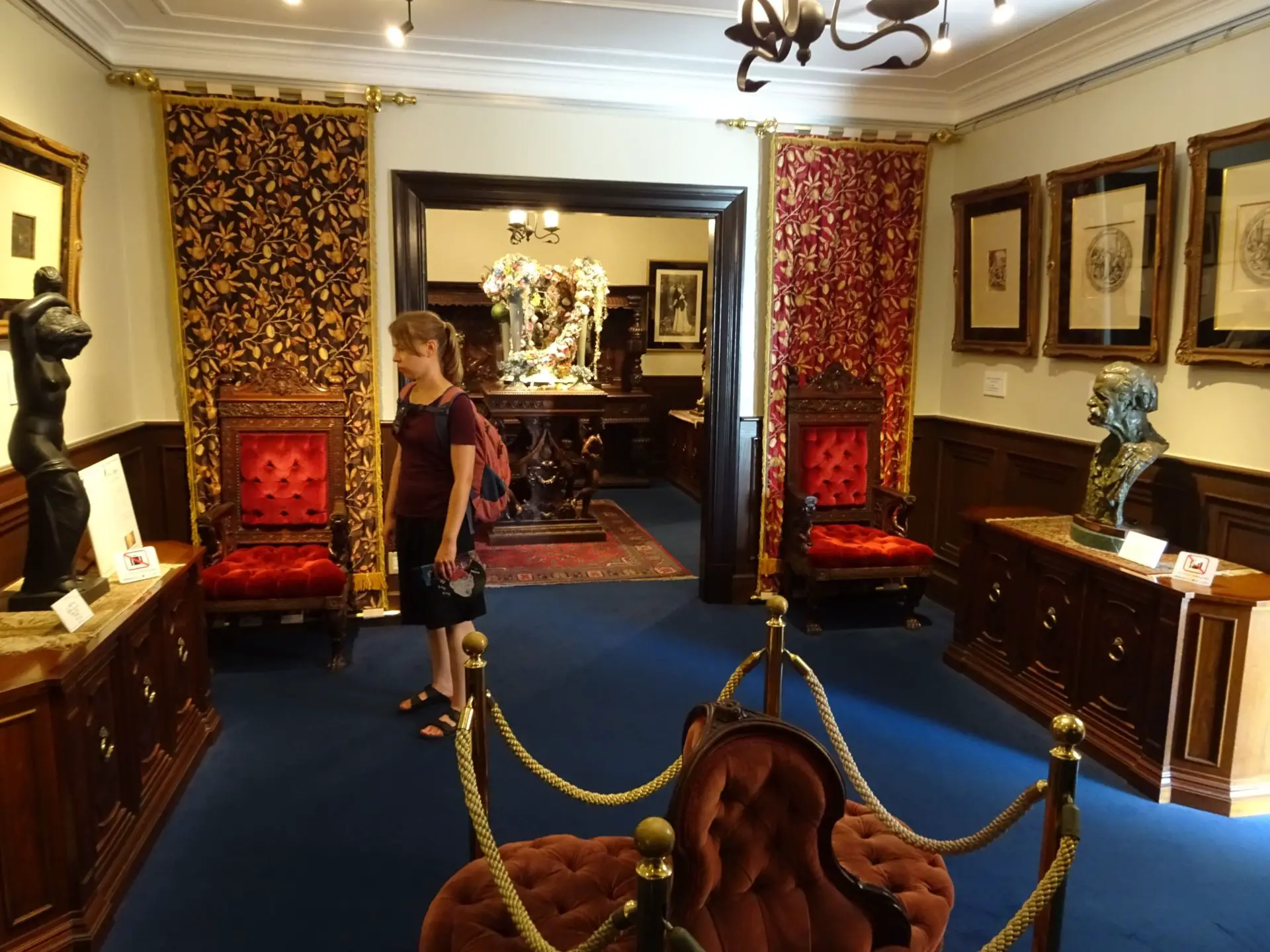
Translating to “Hillside House Number 8”, this building sports an incongruous architectural style combining a Tudor-like façade with a distinctly Asian gateway. Inside, you’ll find several pieces of period furniture as well as a number of sculptures, including some by Rodin and Renoir.
Uroko House – The rental house
Another impressive building, Uroko house is named after the fish-scale-like slate shingles covering its exterior. It was the first of the Ijinkans to be built in Kitano-Cho and actually consists of two buildings, both accentuated by a round tower with an interior stairwell. Contrary to the other houses in Kitano-Cho, this one was actually rented out to several residents over its use.
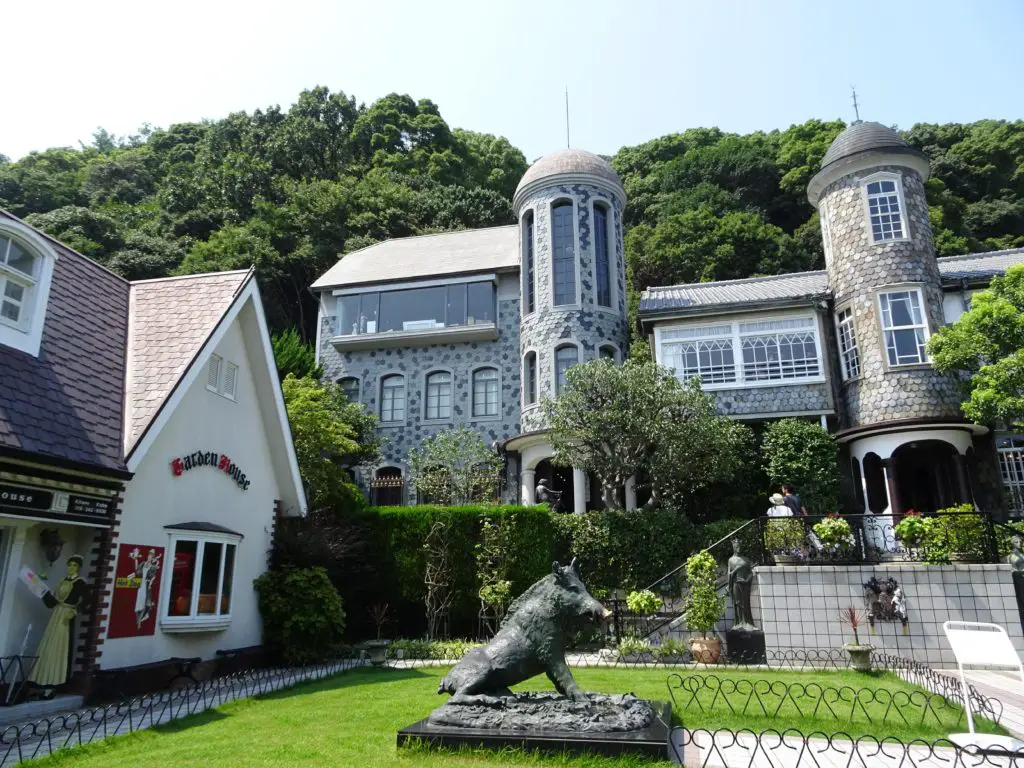
In the main house in the right you’ll find both examples of intricate interior architecture and some exhibitions of rare porcelain and glassware. From the top floor, you’ll have a great view over central Kobe and down to the harbour. The left house contains paintings by contemporary Japanese artists. The boar sculpture in the courtyard is supposed to bring anyone luck who rubs its snout.
Platon Decorative Arts Museum – The Italian House
Like the name suggests, this place is chock-full of 18th and 19th century objet d’arts and furniture. We didn’t really notice a distinct Italian touch; instead the outside of the building has a little blue-and-white chapel attached, which rather reminded us of Greece.
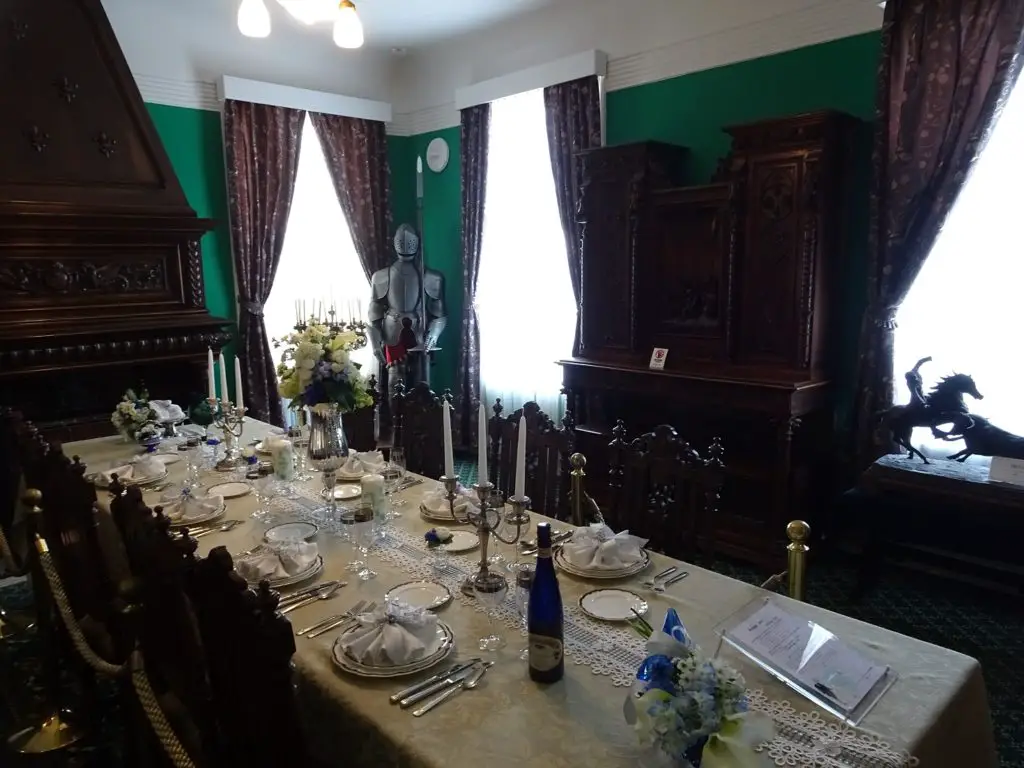
The 19th-century dining room, guarded by an anachronistic knight’s armour is the star attraction on the inside. Outside you can snap pictures with photo stand-ins of James Bond and Audrey Hepburn, because… Why not?
Ben’s House – House of the Hunter
This house used to belong to an Englishman, who seemed to have been pretty passionate about hunting (and displaying his trophies around the house). Not something I really care for plus the atmosphere screams more Norman Bates’ office than “sophisticated” hunting lodge. If you skip a house make it this testament to unnecessary cruelty against animals.
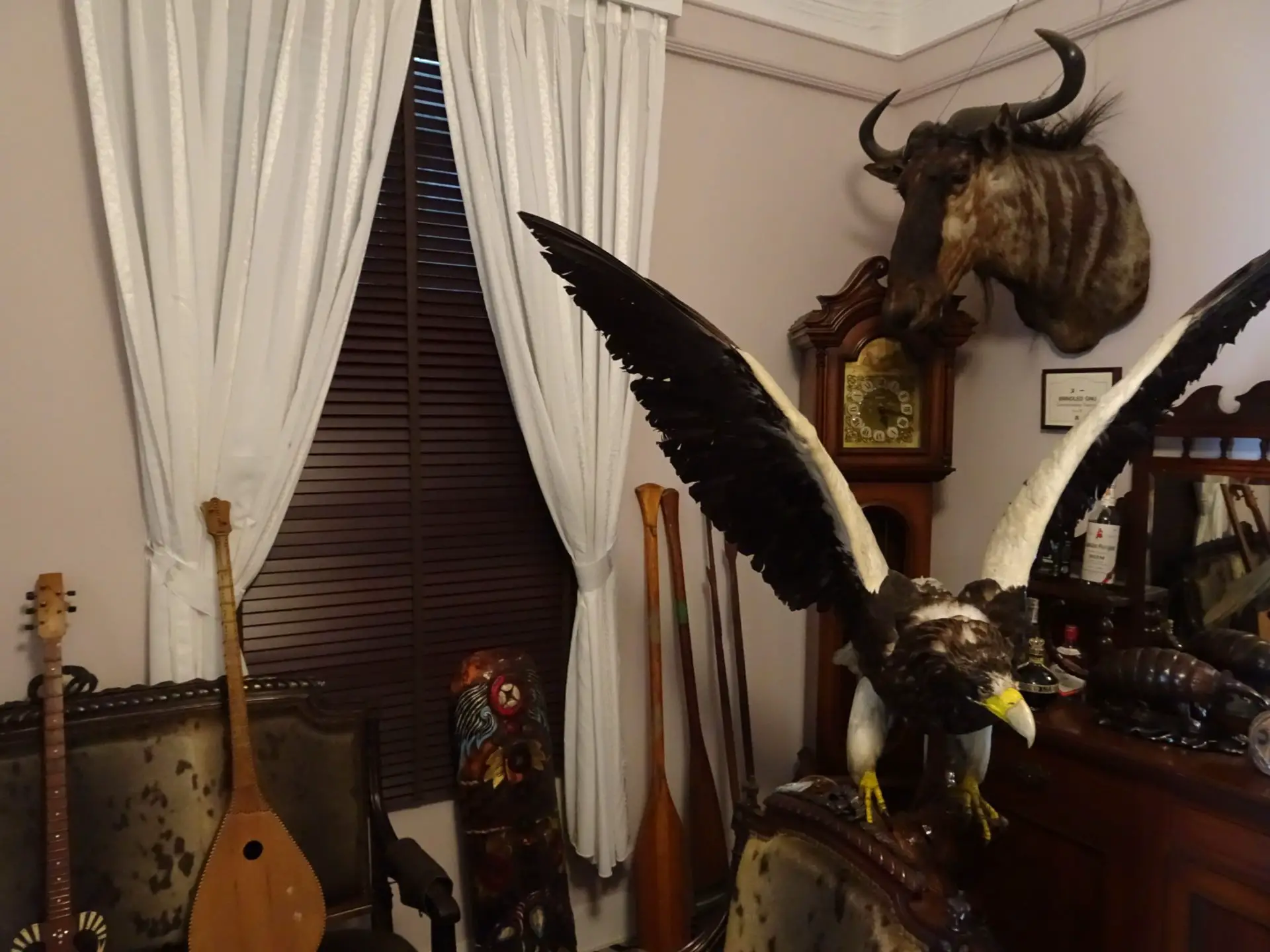
That said in between bison heads and upright polar bears straight out of Mr. Burns Office, there are some interesting instruments and artworks, presumably brought back from the hunting trips, so if the house is included in your combo ticket you might want to check it out anyway.
Yokan Nagaya – The French House
This mansion contains some truly over-the-top period furniture which wouldn’t be out of place in a 19th-century French palace. Apart from that, you’ll find displays of glass art and some wacky sculptures including giant wasps and a vase which for some reason is filled with flamingos.
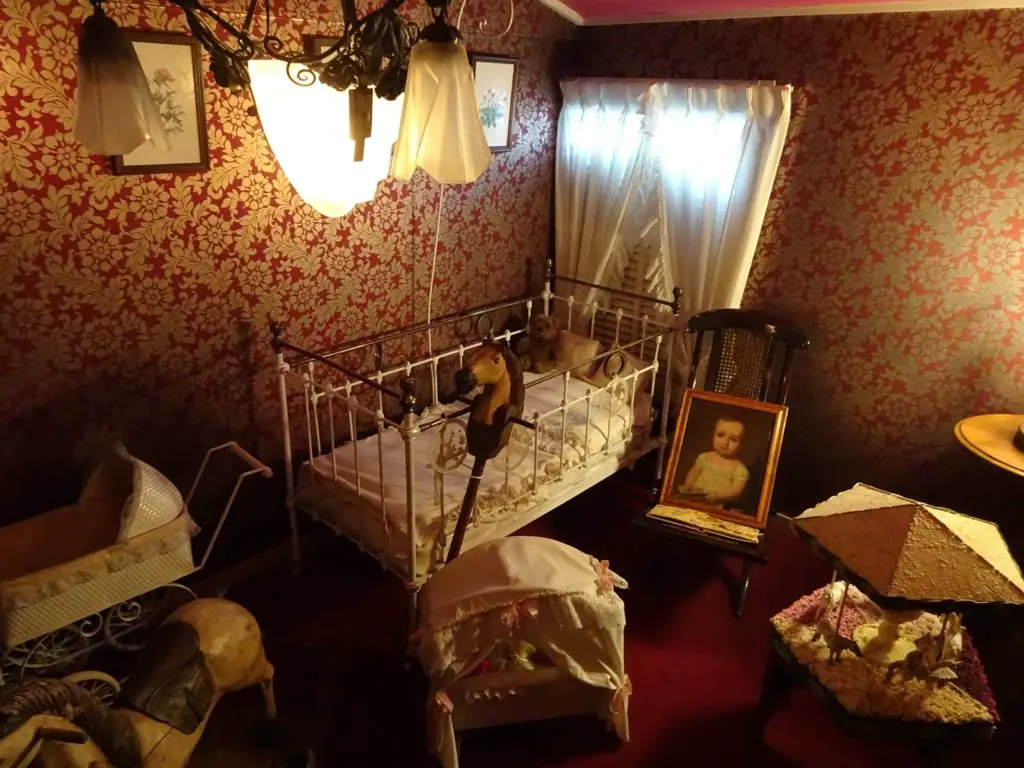
Also, check out the creepy nursery upstairs which looks like it belongs in a haunted house movie (I can just see those wooden horses starting to move frantically by themselves).
The English House (no doubt about that)
This former home of an English merchant is where it gets really gimmicky. England house basically is a recreation of Baker Street 221b complete with wax figures of Sherlock Holmes and Watson in their study. If you’re a fan, you’ll be delighted about the details from many of the stories placed all over the interior.
Still, it feels more like an amusement park attraction than a historical museum (which is probably on purpose). If you need to unwind after your explorations, the ground floor holds a small pub by the name King of Kings (only open in the evenings).
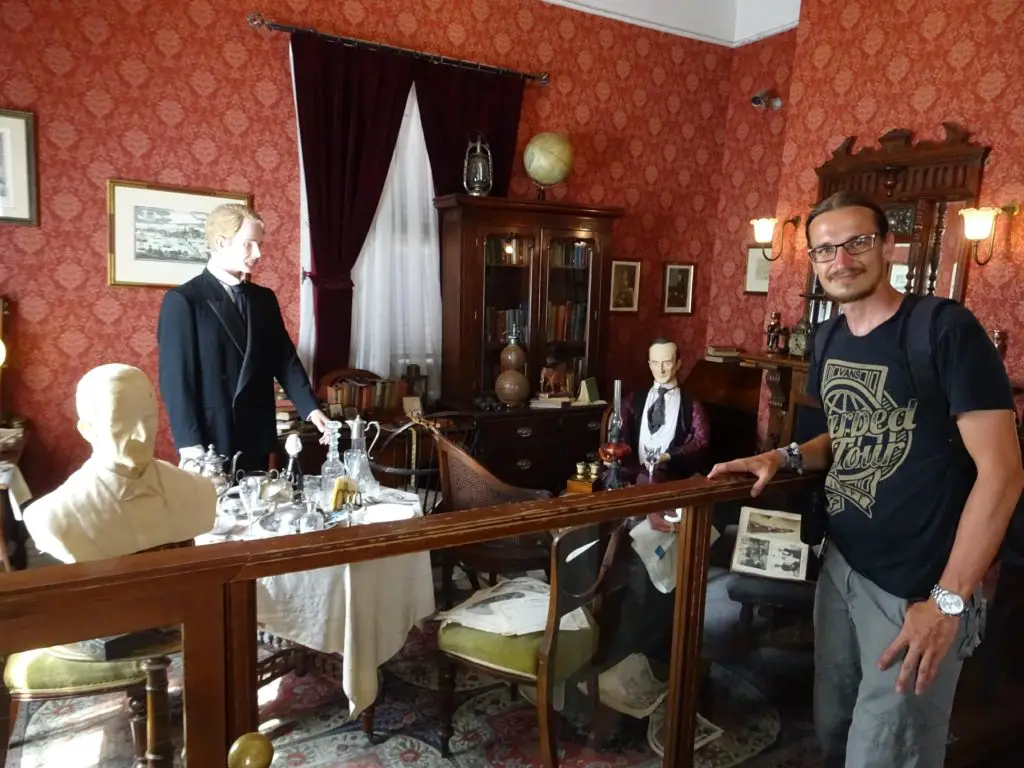
The small garden in the back features a recreation of a Baker Street Tube Station for desperately homesick Brits and some random figures from Alice in Wonderland (because Lewis Carroll also was British? I’m stumped). Anyway, Humpty Dumpty already perches dangerously on the wall. This guy just doesn’t seem to learn from his mistakes.
How to get to Kitano-Cho
The easiest way to reach the quarter is by walking West from Shin-Kobe JR Station for about 10 minutes along Kitano-dori.
Map of Kitano-Cho
I’ve put all the houses mentioned above on this map to give you an idea of the layout of the area.
Where to stay near Kitano
We stayed in the good-value Hostel Yume-Nomad a little west of Downtown Kobe but if you prefer to stay in the Kitano-Cho area, there are plenty of midrange hotels (like Hotel Kitano Plaza Rokkoso or Hotel Crowne Plaza Kobe) and some budget options (like Green Hill Hotel or Hotel Livemax) around. Have a look at the map above to for more choices.
See also
The ultimate Guide to finding cheap Kobe Beef in Kobe, Japan